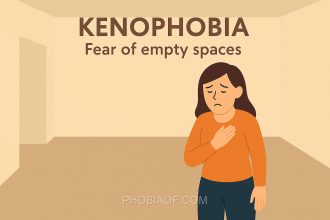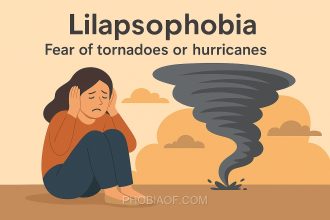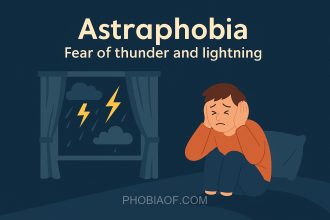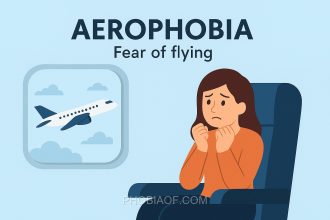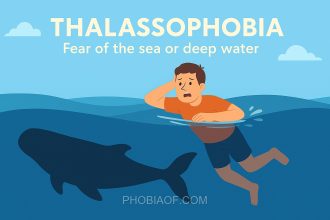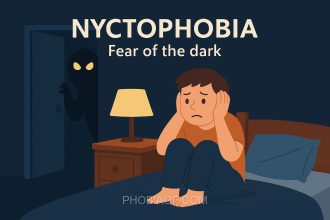Have you ever felt a sudden surge of anxiety when stepping into a crowded elevator or entering a small, windowless room? If so, you’re not alone. This uneasy feeling is often associated with claustrophobia, a common fear of confined spaces that can affect many people worldwide.
Claustrophobia, derived from the Latin word “claustrum” meaning a closed-in place, and the Greek word “phobos” meaning fear, is more than just a simple dislike of small spaces. It is a specific phobia that triggers intense anxiety and panic in situations where an individual feels trapped or unable to escape.
People with claustrophobia might experience symptoms such as sweating, increased heart rate, and even shortness of breath when faced with confined environments. These reactions are not just uncomfortable but can significantly impact one’s daily life, making seemingly ordinary tasks challenging.
- Imagine avoiding elevators and opting for stairs, no matter the floor, just to escape that moment of panic.
- Think about the anxiety that might arise from simply sitting in a crowded subway car.
- Consider the distress of feeling trapped during an MRI scan, a common medical procedure.
Understanding and acknowledging the impact of claustrophobia is the first step towards managing it. Whether through therapy, gradual exposure, or relaxation techniques, there are ways to cope with and reduce the fear of confined spaces. If you or someone you know is struggling with claustrophobia, remember that help is available, and you’re not alone in this journey.
Causes of Claustrophobia
Claustrophobia, the fear of confined spaces, can be a distressing condition for many. Understanding its origins can help in managing and potentially overcoming it. Various factors contribute to the development of this phobia, ranging from genetic influences to environmental elements.
Genetic Predisposition
Research suggests that genetics might play a role in developing claustrophobia. If someone has a family history of anxiety disorders or specific phobias, they may be more prone to developing similar conditions themselves. This genetic predisposition can create a heightened sensitivity to anxiety-provoking situations, such as being in a confined space.
Traumatic Experiences
Experiencing a traumatic event in a confined space can lead to the onset of claustrophobia. For example, a person who has been trapped in an elevator or enclosed environment may develop a lasting fear of similar situations. This direct exposure to a distressing event can leave a lasting impression, resulting in claustrophobic reactions.
Learned Behavior
Claustrophobia can also be a learned behavior. Observing others who express fear or anxiety in confined spaces can influence an individual’s own reactions. If a child frequently sees a parent or sibling displaying fear in elevators or small rooms, they might learn to associate these situations with danger or discomfort.
Psychological and Environmental Factors
Several psychological factors, such as an individual’s general anxiety levels, can contribute to claustrophobia. Those with a predisposition to anxiety disorders may find themselves more susceptible to developing specific phobias. Environmental factors, such as a history of restrictive environments or stressful living conditions, can also play a role.
Theories and Research Findings
- Some theories suggest that claustrophobia may be an evolutionary adaptation, where a fear of confinement could have historically helped individuals avoid danger.
- Research has indicated that the amygdala, a part of the brain involved in processing fear, may be more active in individuals with claustrophobia.
Understanding these potential causes can provide insight into effective treatment strategies, including therapy and coping mechanisms, to manage and alleviate the symptoms of claustrophobia.
Symptoms of Claustrophobia
Claustrophobia is characterized by an intense fear or anxiety when in confined spaces. This phobia can trigger a range of physical and emotional symptoms. Recognizing these symptoms can be the first step towards seeking help.
- Intense Fear or Anxiety: A persistent and overwhelming fear of being in enclosed or small spaces.
- Panic Attacks: Sudden onset of intense fear or discomfort, often accompanied by a feeling of losing control.
- Sweating: Excessive perspiration, even in cool environments, triggered by anxiety.
- Rapid Heartbeat: An accelerated heart rate that may feel like pounding or palpitations.
- Breathlessness: Difficulty breathing or a sensation of being unable to get enough air.
- Dizziness or Lightheadedness: Feeling faint or unsteady due to heightened anxiety.
- Trembling or Shaking: Involuntary muscle movements caused by intense fear.
- Nausea: Stomach upset or a feeling of sickness that accompanies anxiety.
- Avoidance of Triggers: Going to great lengths to avoid situations, places, or objects that might provoke a claustrophobic reaction.
- Overwhelming Dread: A constant sense of apprehension about potential encounters with confined spaces.
- Feeling of Imminent Danger: An irrational fear that something terrible will happen when confined.
For individuals with severe claustrophobia, these symptoms can significantly interfere with daily life, making it difficult to engage in everyday activities or responsibilities.
Treatment for Fear of Confined Spaces
Claustrophobia, a fear of confined spaces, can be distressing, but it is important to remember that this phobia can be treated and managed over time. With the right approach, many individuals find significant relief from their symptoms and regain control over their lives.
Therapy and Treatment Options
Several proven therapies have been effective in treating claustrophobia:
- Exposure Therapy: This involves gradually and systematically exposing the individual to confined spaces in a controlled and safe environment. Over time, this helps reduce the fear response and builds confidence.
- Cognitive-Behavioral Therapy (CBT): CBT helps change negative thought patterns that contribute to the fear. By focusing on altering these thoughts, individuals can learn to manage their anxiety more effectively.
- Counseling: Talking with a counselor can provide support and understanding, helping individuals to process their fears and develop coping strategies.
Self-Help Coping Techniques
In addition to professional therapy, the following self-help techniques can complement treatment:
- Relaxation Exercises: Techniques such as deep breathing, progressive muscle relaxation, or guided imagery can help calm the mind and reduce anxiety.
- Meditation: Regular meditation practice can increase mindfulness and reduce stress, helping individuals remain calm in confined spaces.
- Support Groups: Joining a support group can provide a sense of community and shared understanding, offering encouragement and tips from others who have experienced similar fears.
Medication
In some severe cases, medication such as anti-anxiety medications may be prescribed to help manage symptoms. However, it is generally recommended to focus on therapy and coping skills as the primary treatment methods.
Remember, seeking professional help is crucial if claustrophobia is interfering with your daily life. Mental health professionals can tailor a treatment plan to suit your specific needs and guide you on your journey to overcoming this phobia.
With patience and persistence, you can learn to manage claustrophobia and lead a fulfilling life. Take the first step today by reaching out to a mental health professional for support and guidance.
Conclusion
Understanding claustrophobia, from its causes to its symptoms, is a crucial step toward empowerment and effective management of this common anxiety disorder. By recognizing the triggers and manifestations of your fear, you can take informed steps to address the phobia head-on. Whether through self-help strategies or professional intervention, knowledge is a powerful tool in overcoming the limitations that claustrophobia might impose on your life.
Remember: Many people successfully manage or even overcome their phobias with time, patience, and the right support. If you find yourself struggling, consider reaching out to a therapist or talking to a doctor about your experiences. These professionals can offer guidance and therapeutic options tailored to your needs.
Stay hopeful and proactive in your journey to conquer claustrophobia. With the right help and a committed approach, you can look forward to a future with fewer limitations and more freedom to enjoy life to the fullest.

